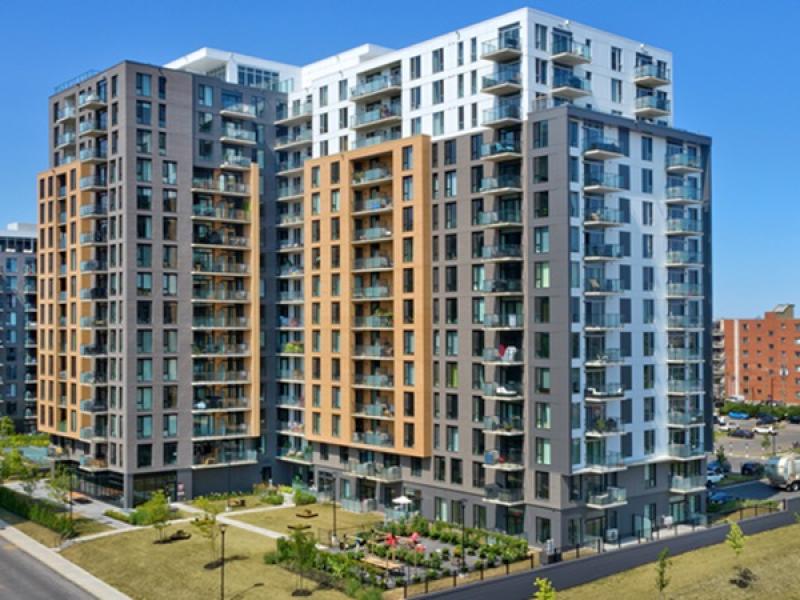With land in urban areas becoming harder to come by and municipal development charges driving up new construction costs, converting existing buildings is destined to become even more prominent than it is today.
 Seven people with experience in the field discussed such projects at the North American New Apartment Construction and Mixed-Use Symposium and Expo at the Metro Toronto Convention Centre on June 21.
Seven people with experience in the field discussed such projects at the North American New Apartment Construction and Mixed-Use Symposium and Expo at the Metro Toronto Convention Centre on June 21.
Converting existing buildings: Part one was published on July 14 and provided examples of conversions to apartment buildings and student housing.
Converting to retirement residences
While about 5,000 retirement suites are added in Canada annually, there’s still a severe shortage that’s only going to worsen as people live longer and waiting lists for government-funded long-term care beds grow.
Paul Marsh, CBRE’s senior director of seniors housing and healthcare group, said new retirement residences in the Greater Toronto Area have to charge $4,000 a month in rent in order for them to make financial sense to build. Apartments can be converted into senior residences much cheaper than starting from scratch and can therefore charge lower rents.
Greenwood Retirement Communities is following that strategy.
“It allows you to start with $80,000 to $100,000 a unit and after HST, the renovation costs and lease-up losses, it’s still much, much, much cheaper than building new at $250,000 per suite or even more,” said president Miri Hadas Koller.
“Our suites are normally smaller so we can be at $2,500 a month or $2,800 a month. We’re catering to a much broader audience. I think we will need to find how to build cheaper and rent for less. I’m not entirely sure how else to do that other than converting older buildings.”
Koller offered an example of how her company converted a Brampton, Ont. Holiday Inn that was almost 50 years old into a retirement home. This involved fixing walls, replacing carpets and furniture, and upgrading systems (shown in the image).
The property is in its second year of lease-up and is 60 per cent occupied. Retirement residences typically take two to three years to fill, Koller said.
Converting to self-storage facilities
SVN Commercial Realty senior advisor and national director of self-storage Nick Malagisi talked about conversions of a former auto dealership, former big box stores and former bowling alleys into self-storage facilities in the U.S. People from 18 to 80 are using such outlets, which have no target demographic.
“Make no mistake, there is a huge opportunity in this economy for experienced brokers to help their clients reposition existing, non-performing retail or industrial buildings into self-storage facilities,” said Malagisi, while acknowledging lease-up periods of three or four years.
“Self-storage companies are looking for infill locations because they want to be where the people are. The only people that are building out in the suburbs are people who already own the land.”
Malagisi added that underperforming office buildings and hotels would be good candidates for conversion to self-storage except that they’re usually built to “60 to 80 pounds per square foot live load” while his facilities require “125 pounds per square foot live load.”







